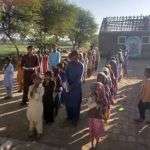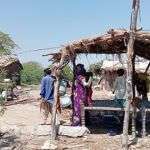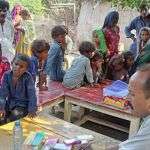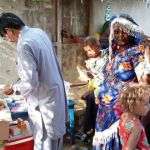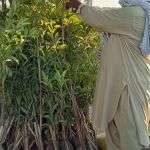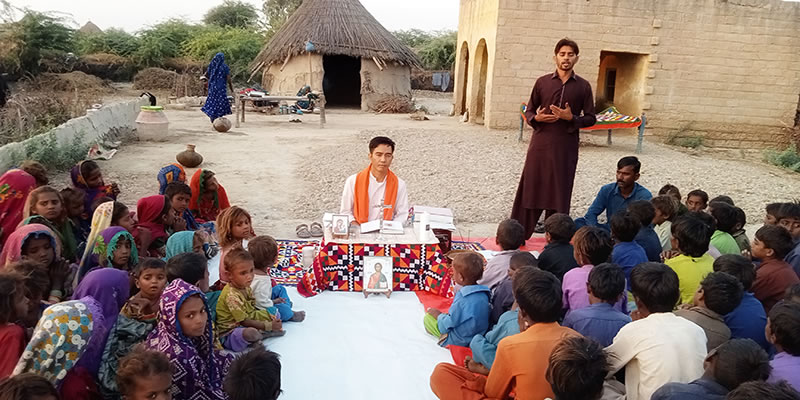
By Fr. Louie Q. Ybañez
It has been more than three months since the massive flood hit Pakistan particularly Sindh as the most damaged province in terms of infrastructure and agriculture. The amount of rainfall was unprecedented with 460% increase in the province of Sindh alone. The traces of the flood remain visible on low-lying lands where the water has been collected from many areas by numerous pumping machines to dry out farmlands and villages inundated by water. Although there are still places where people remained camped on the roadside and elevated areas, many of the Parkari Kohli people have returned to their homes to build up the life that was interrupted by an agonizing deluge. The damage and the enormous need in the aftermath reveal that the poor are one of the most vulnerable peoples when natural disaster occurs.
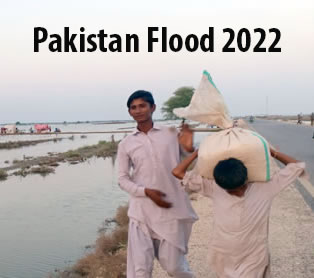 Weeks after the flood, generous relief response poured in. I work in eleven villages with almost 300 families; the biggest village has a total of 96 families. The immediate response was to give food to the affected families. We have given a total of 533 packages which includes food, mosquito nets, and some of the packages containing medical kit and water container. Much of the donations came from Columban donors, some from Filipinos that are working here in Pakistan and some sent from the Philippines. Misean Cara gave a total of 150 food packages, water container and medical and sanitary kit. Food packages and mosquito nets (116) from the Bishop’s Office in the Diocese of Hyderabad were also distributed.
Weeks after the flood, generous relief response poured in. I work in eleven villages with almost 300 families; the biggest village has a total of 96 families. The immediate response was to give food to the affected families. We have given a total of 533 packages which includes food, mosquito nets, and some of the packages containing medical kit and water container. Much of the donations came from Columban donors, some from Filipinos that are working here in Pakistan and some sent from the Philippines. Misean Cara gave a total of 150 food packages, water container and medical and sanitary kit. Food packages and mosquito nets (116) from the Bishop’s Office in the Diocese of Hyderabad were also distributed.
Other needs arise as many were sickened with water-borne diseases due to lack of access to clean drinking water and mosquito related diseases are prevalent such as malaria and dengue fever. Some of them we have referred to the city to avail of better treatment. Fever and cough are also common among children. A medical team composed of a doctor, two nurses, and a medicine dispenser has been organized by Columban Fr. Tomas King. They went to four villages to conduct a medical outreach. They gave free medical consultation and medicines to the patients which includes not only Christians but Hindus and Muslims as well.
Related Stories
Rehabilitation after the flood is on-going. Many of the families are settled under makeshift tents. Some have been rebuilding their houses bit by bit with frail materials that are readily available in the area where they are settled. These would be prone to damage when the next torrential rain comes. It is costly for them to buy sturdy materials for a more resilient house. For many, providing food is already challenging, so they simply could not manage. What matters for them is that they have walls to protect their children from the biting cold as winter approaches.
“The harvest would not help us to recover. It has become difficult to grow fine crops,” according to a local in one of the villages I visit. Many have to struggle with unproductive lands that were inevitably becoming unfertile brought about by salination from dried-up flood water. The yields are expected to go down because the soil is no longer adequate for farming. It has increasingly been a problem that small farmers and crop sharers have been dealing with over the years.
Whenever I visit the schools, I would always ask children what they had for breakfast and the answer would always be “chai and rotti” (tea with milk and a round flat bread). Many of the children suffer from malnutrition and various illnesses. Although challenged by these conditions, many of our children show interest to go to school. The number of children attending the school in the villages has increased. Somehow the schools have become a playground for them, an essential distraction from the harsh realities of a destitute life. There are five schools in the villages, and most of these schools are not in good condition with cracks on the walls, damaged roofs, and destabilized foundations.
There are mounting challenges with helping people to retain a sense of normalcy. It takes more than just aid and relief operations to rise above these challenges. To be resilient is to be able to look for community-based solutions to better cope up with the effects of climate change.
